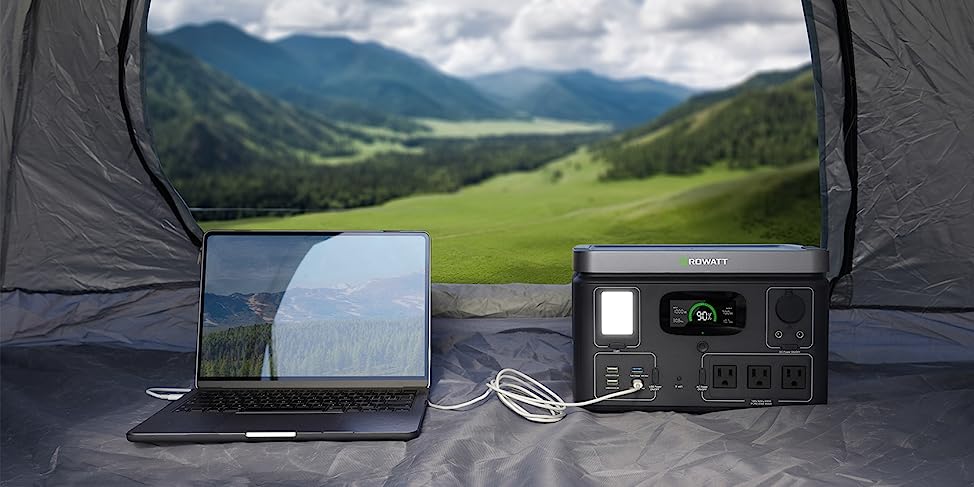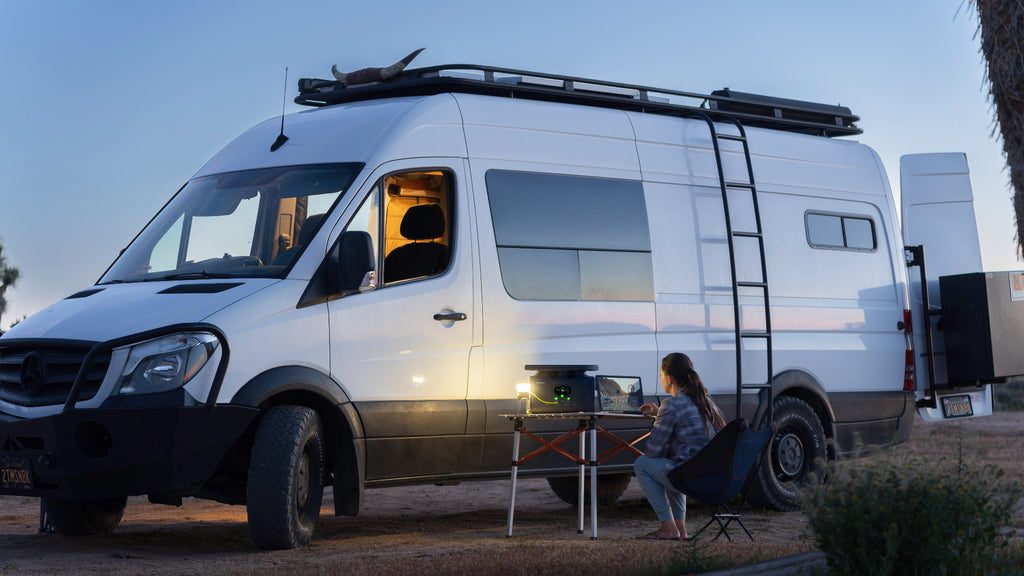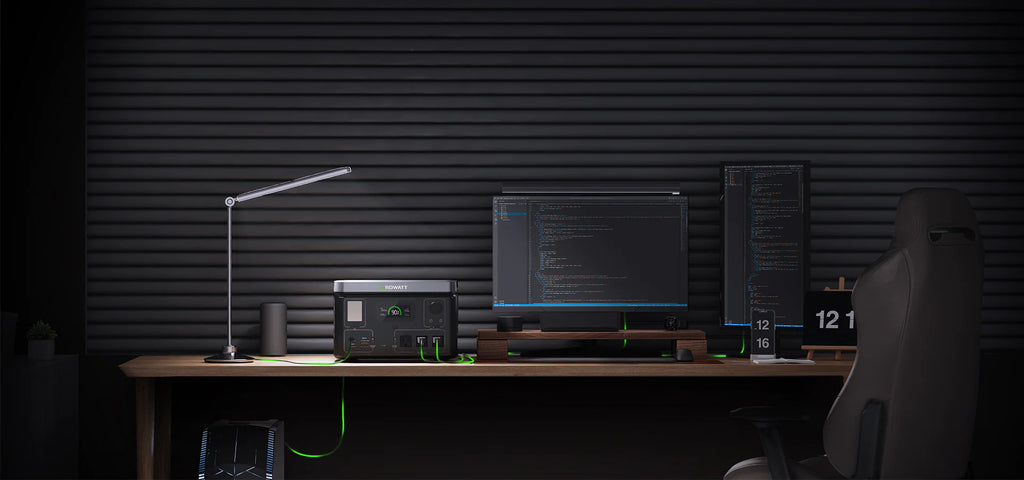Laptops are essential devices for work, school, and entertainment on the go. But their large batteries can still run out after just a few hours of use. This is where laptop power banks come in - portable chargers with large capacities designed specifically to charge laptops.
Laptop power banks have risen in popularity as laptops become increasingly common and mobile. With more people working remotely or studying on the move, having backup power for your laptop can make all the difference in productivity. The ability to recharge your laptop anywhere provides peace of mind when you're away from a wall outlet.

We'll also dive into the key factors to evaluate when choosing a laptop power bank. These include capacity needs, power output, portability, charging efficiency, and connectivity. With so many battery packs on the market, it's important to select one tailored to your laptop model that can deliver multiple full charges when you need them most. Read on for an in-depth look at the best laptop power banks to keep you powered up anywhere.
What is a Laptop Power Bank
A laptop power bank is a portable device designed to provide extra power to a laptop computer when an electrical outlet is unavailable. As the name suggests, it essentially acts as a backup battery or power bank specifically made for laptops.
Laptop power banks are also sometimes called portable laptop chargers or external laptop batteries. Their sole purpose is to charge and recharge a laptop's internal battery when a wall outlet cannot be accessed. This provides users with the ability to power and use a laptop away from electrical sockets for an extended period of time.

Unlike regular power banks made for smartphones and tablets, a laptop power bank needs to be powerful enough to fully charge a laptop battery, which tends to have a much higher capacity than smaller mobile devices. The power output of a laptop power bank is measured in watt-hours (Wh), with higher Wh equating to more charging capacity and power.
In summary, a laptop power bank is a portable charging device designed to provide supplementary power to a laptop when wall outlets are limited or unavailable. It serves as an external battery source for laptops.
How a Power Bank Charges a Laptop
Charging your laptop with a power bank is a simple 3-step process:
- Plug the power bank into an outlet to fully charge its internal battery. Most quality power banks will have indicator lights displaying the charge level. Allow several hours for a full charge, depending on the capacity of your particular power bank.
- Unplug the power bank from the outlet once it is fully charged, and place it in your laptop bag, backpack, or carrying case. The power bank will retain its charge for several months when not in use.
- Plug your laptop into the power bank using the provided cable when your laptop's battery level becomes low. The power bank will automatically begin sending a charge to your laptop's battery. Most power banks can charge a laptop 1-3 times (Growatt VITA 550 can charge it around 6 times) before needing to be recharged themselves. Continue working on your laptop as normal while it charges from the power bank.
The key takeaway is that you first need to fully charge the power bank itself, then simply plug it into your laptop whenever you need extra power. As long as the power bank has a sufficient charge, it will be able to restore your laptop's battery, allowing you to work anywhere.
Benefits of a Laptop Power Bank
A laptop power bank provides several key benefits:
Work anywhere
With a power bank, you can work in places where power outlets are not available, like airports, coffee shops, parks, and more. This allows you to stay productive no matter where you are.
Prevent data loss
If your laptop dies from low battery when you're working on an important document or presentation, you risk losing unsaved progress. A power bank lets you quickly recharge to avoid data loss disasters.
Power during outages
If the power goes out at home or work, a laptop power bank can supply emergency power to your laptop. This allows you to keep using your laptop for hours until electricity returns.
So if you need extra power for work on the go or as a backup during outages, a high capacity laptop power bank is essential. It provides the flexibility to work anywhere while safeguarding your data.
Who Needs a Laptop Power Bank
A laptop power bank is an essential gadget for certain professionals and students who are often on the go. Having a portable power source can prevent headaches and loss of productivity. Here are the primary groups who would benefit from owning a laptop power bank:
Travelers
Those who travel frequently for work or leisure need a way to charge devices on long flights, road trips, and while staying in hotels. A laptop power bank allows a traveler to work seamlessly no matter where they are. They don't have to hunt for sparse outlets in airports or hotels.

Remote Workers
With more people working remotely, having backup power for a laptop is crucial. Remote workers can't simply plug into an office wall outlet. A laptop power bank gives them the flexibility to work from home, coffee shops, shared workspaces or anywhere else. Uninterrupted power means deadlines are met.
Students
College students have long days on campus punctuated by time in libraries, study halls, and classrooms where outlet access is limited. A laptop power bank helps them power through long classes, late night study sessions, and group projects requiring a charged laptop. Students can work as needed without worrying about finding an open outlet.
Notes: Most power banks that exceed the limited capacity are not allowed to be brought onto the plane. The specific instructions should be based on the official instructions of each airport.

What to Consider When Buying A Laptop Power Bank?
When purchasing a laptop power bank, there are a few key features to consider:
Capacity Needs
When selecting a laptop power bank, it's crucial to choose one with sufficient capacity to meet your needs. The capacity indicates how much charge the power bank can hold, measured in milliamp hours (mAh).
To determine the required capacity, you'll need to consider your laptop's battery size and power requirements. Most laptop batteries range from 40-100 Wh. For example, if your laptop has a 60Wh battery, you'd want a power bank with at least that much capacity. Growatt VITA 550 power station is 538Wh that it can charge your 60Wh laptop for 6 times.
It's important not to choose a power bank with too small of a capacity. If it can't fully recharge your laptop's battery, it defeats the purpose. A good rule of thumb is to select a power bank that has at least 125% of your laptop's battery capacity. So for a 60Wh laptop battery, look for a power bank with a minimum of 75Wh (or 75,000mAh) capacity.
Be careful of exaggerated capacity claims from less reputable brands. Stick with trusted, high-quality power banks from leading manufacturers that use advanced lithium-ion battery cells. These will have the most accurate capacity ratings.
Undersizing your laptop power bank to save money is a false economy. Running out of charge halfway through your work renders the power bank ineffective. Spend a little extra for sufficient capacity so your power bank reliably keeps your laptop powered up all day.
Power Output
When selecting a laptop power bank, it's crucial to consider the power output or wattage it can provide. You want to make sure the power bank can deliver enough power to efficiently charge your laptop.
Most laptops require 60W or higher output for fast charging. For example, many Dell laptops need 45W to 65W, MacBook Pros need 60W to 100W, and some gaming laptops require up to 230W power input. If your power bank can't supply enough wattage, your laptop may charge slowly, intermittently, or not at all.
A good rule of thumb is to choose a laptop power bank that provides at least 60W to 65W output. This will be sufficient to charge most standard laptops at their fastest charging speed. However, if you have a high-end gaming laptop or workstation that requires 90W or more, you'll want to select a higher capacity power bank that can deliver that kind of power output.
When in doubt, check your laptop's power adapter to see its wattage rating. Then match that with a laptop power bank that can provide an equivalent or higher power output. This will ensure efficient and fast charging for your laptop while on the go.
Portability
When selecting a laptop power bank, portability is a crucial factor to consider. After all, the main appeal of these power banks is being able to easily take extra power with you on the go.
Compact, portable size for travel
Look for a laptop power bank that has a slim, compact design that can easily fit into your bag or luggage. Models that are too bulky and heavy can be a pain to transport. Pay attention to the dimensions and weight.
Weight and dimensions
You can easily find some popular laptop power bank models and their weights on the market, normally, the larger capacity power banks tend to weigh more.
Battery capacity
Higher battery capacity means more weight, so also factor how much capacity you need. A massive 30,000mAh or 80,000mAh power bank weighs a lot more than a slim 20,000mAh version. Consider your needs versus desire for maximum portability.
In summary, look at the dimensions, weight, and capacity to find the best balance of power versus portable size for your needs. The most portable laptop power banks weigh under 3 lbs.
Charging Efficiency
Charging efficiency has a major impact on how quickly your devices will charge using a portable power bank. Efficiency refers to the percentage of electricity that flows from the power bank's battery to your device, rather than being lost as heat during the transfer.
Higher efficiency banks can charge your laptop faster, while low efficiency models will have longer charge times. This is because more power is getting delivered for every minute the device is connected.
Advanced charging technologies like USB Power Delivery allow power banks to provide higher wattage output to compatible laptops and devices. This increased output enables much faster charging compared to standard USB ports. Power Delivery can recharge a laptop battery up to 85% faster than normal USB-A charging.
You'll want to be cautious of cheaper, lower quality power banks that lack Power Delivery support. These banks may have low efficiency ratings, which lead to extremely slow charge times. The low quality internal components and circuitry in cheap models result in more energy being wasted as heat.

Conclusion
When choosing a laptop power bank, it's crucial to find the right balance between capacity, power output, portability, and charging efficiency. With laptops requiring higher capacity batteries and power output to charge properly, you need a bank that can deliver enough juice without being too bulky.
In the end, be sure to evaluate your laptop's power needs and choose a bank that has sufficient capacity and output. Laptop charging can drain power banks quicker than mobile devices, so go for higher capacities like 20,000mAh+. The latest 45W-65W USB-C Power Delivery output will charge most laptops efficiently. With the right laptop power bank, you'll stay powered up wherever you need to work.






